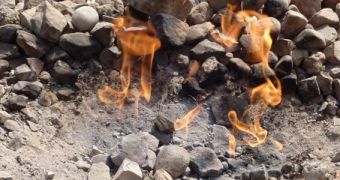For several years, the public opinion has been battered with the idea that natural gas is much cleaner to exploit than coal, because it contains less carbon. A new study by researchers at the Cornell University and the Purdue University demonstrates that significant levels of the dangerous greenhouse gas methane can be found above shale gas wells.
Carbon dioxide is currently the most pervasive greenhouse gas (GHG) in the atmosphere, and it is constantly being released at massive rates from human activities. While it is true that methane can be found in the air in much lower amounts, this GHG is 33 times more potent when it comes to fostering global warming than CO2 is.
Before this study, everyone, from gas producers to experts on the United Nations Intergovernmental Panel on Climate Change (IPCC), touted natural gas as a cleaner, more environmentally-friendly alternative to regular coal. However, if exploiting these resources boosts the amount of methane in the atmosphere, all of its other benefits are immediately and unequivocally canceled out.
Details of the new study were published in the April 14 issue of the esteemed journal Proceedings of the National Academy of Sciences (PNAS). The data the team used in this research was collected during a series of flights carried out over seven well pads in southwestern Pennsylvania. All pads were located on the Marcellus shale formation, Eco Watch reports.
Statistically, the wells the team studied make up less than 1 percent of all wells in southwestern Pennsylvania. What is even more disturbing is that all of the 7 wells were in the drilling stage, when the extraction of natural gas has yet to commence. Traditionally, shale wells begin emitting whatever compounds are synthesized as a byproduct of their activities when drilling begins.
“This small fraction of the total number of wells was contributing a much larger large portion of the total emissions in the area, and the emissions for this stage were not represented in the current inventories,” explains Purdue professor of chemistry and Earth, atmospheric, and planetary sciences, Paul Shepson.
“It is particularly noteworthy that large emissions were measured for wells in the drilling phase, in some cases 100 to 1,000 times greater than the inventory estimates. This indicates that there are processes occurring – e.g. emissions from coal seams during the drilling process – that are not captured in the inventory development process,” the expert adds.
“This is another example pointing to the idea that a large fraction of the total emissions is coming from a small fraction of shale gas production components that are in an anomalous condition,” Shepson goes on to say. The study was conducted from aboard the Purdue Airborne Laboratory for Atmospheric Research aircraft.

 14 DAY TRIAL //
14 DAY TRIAL //